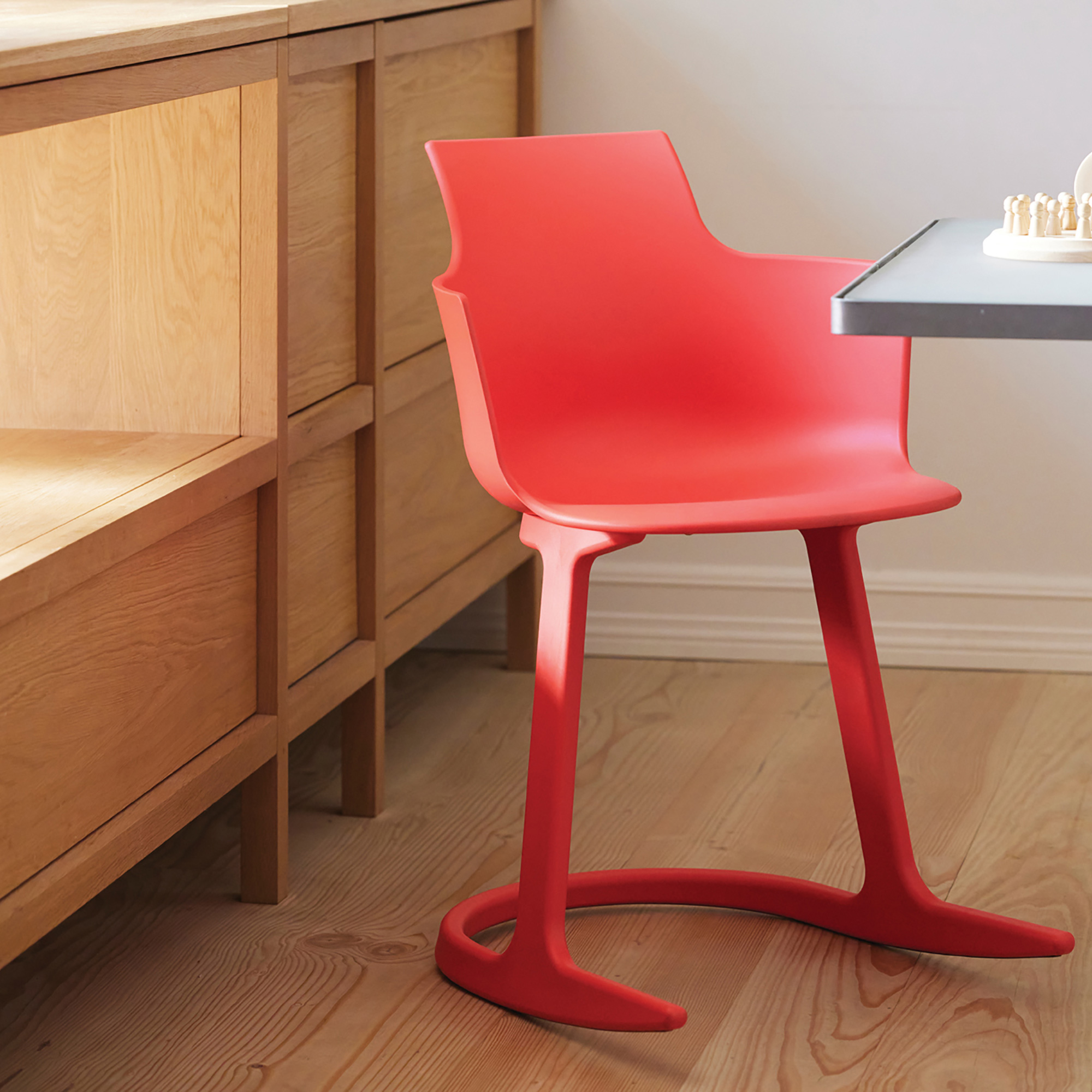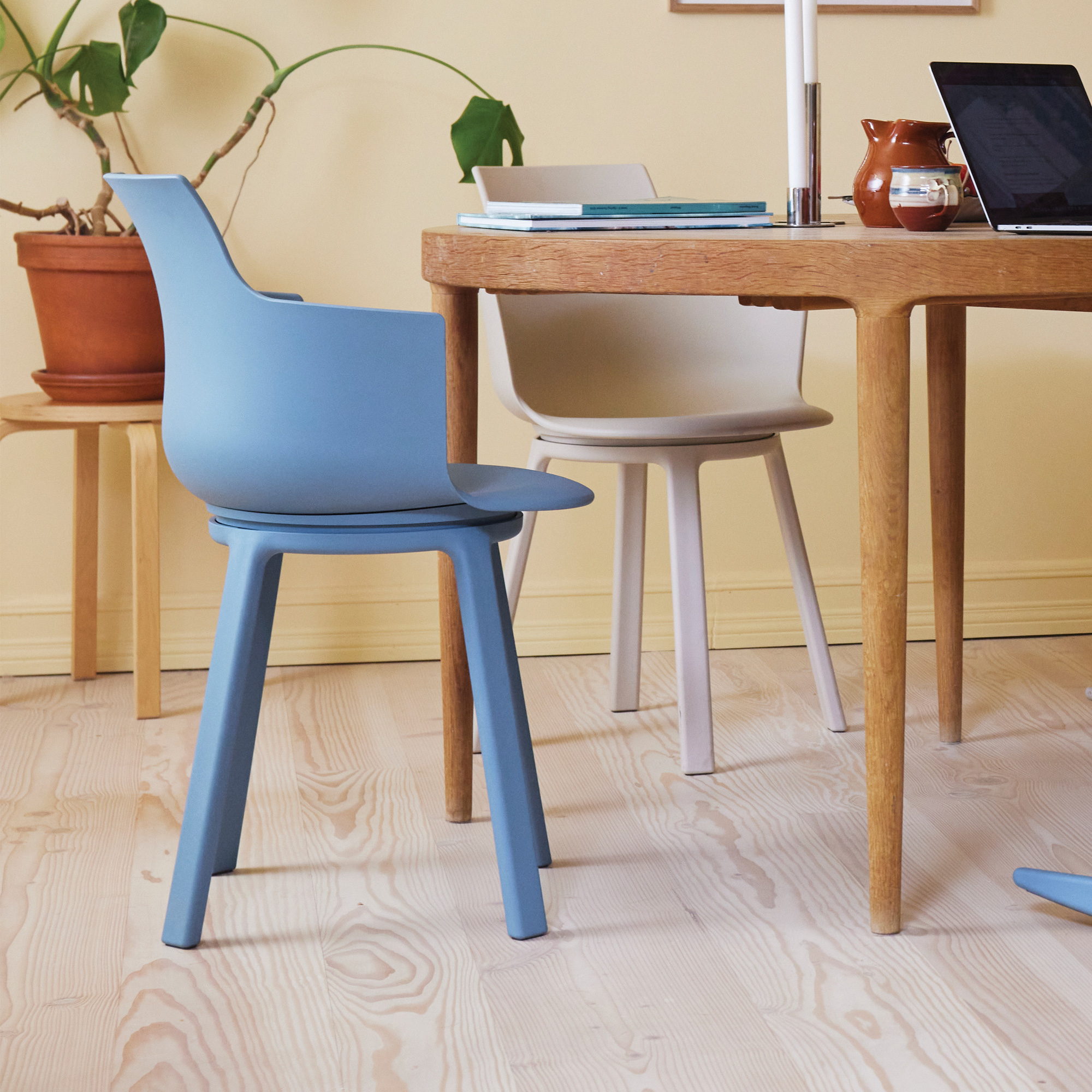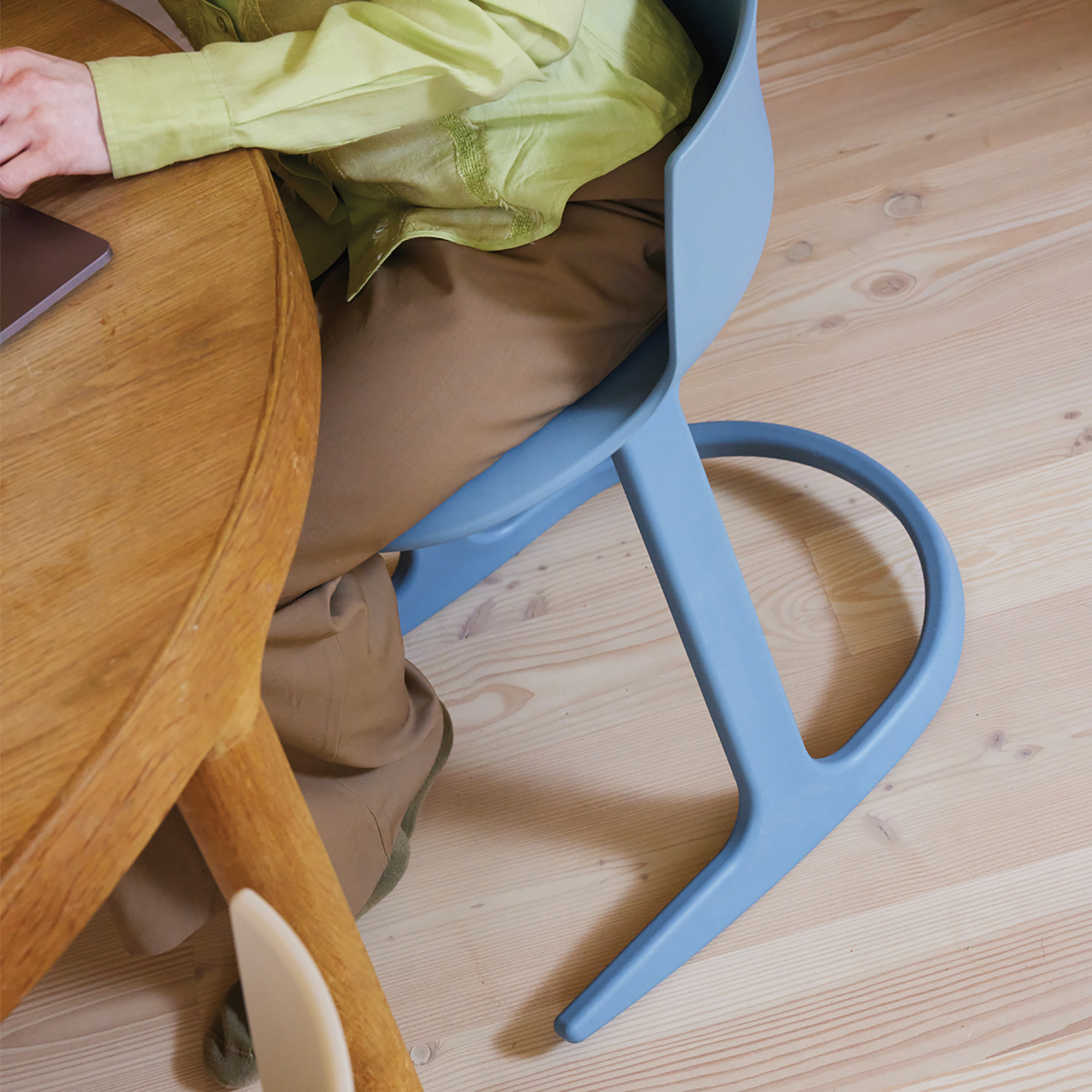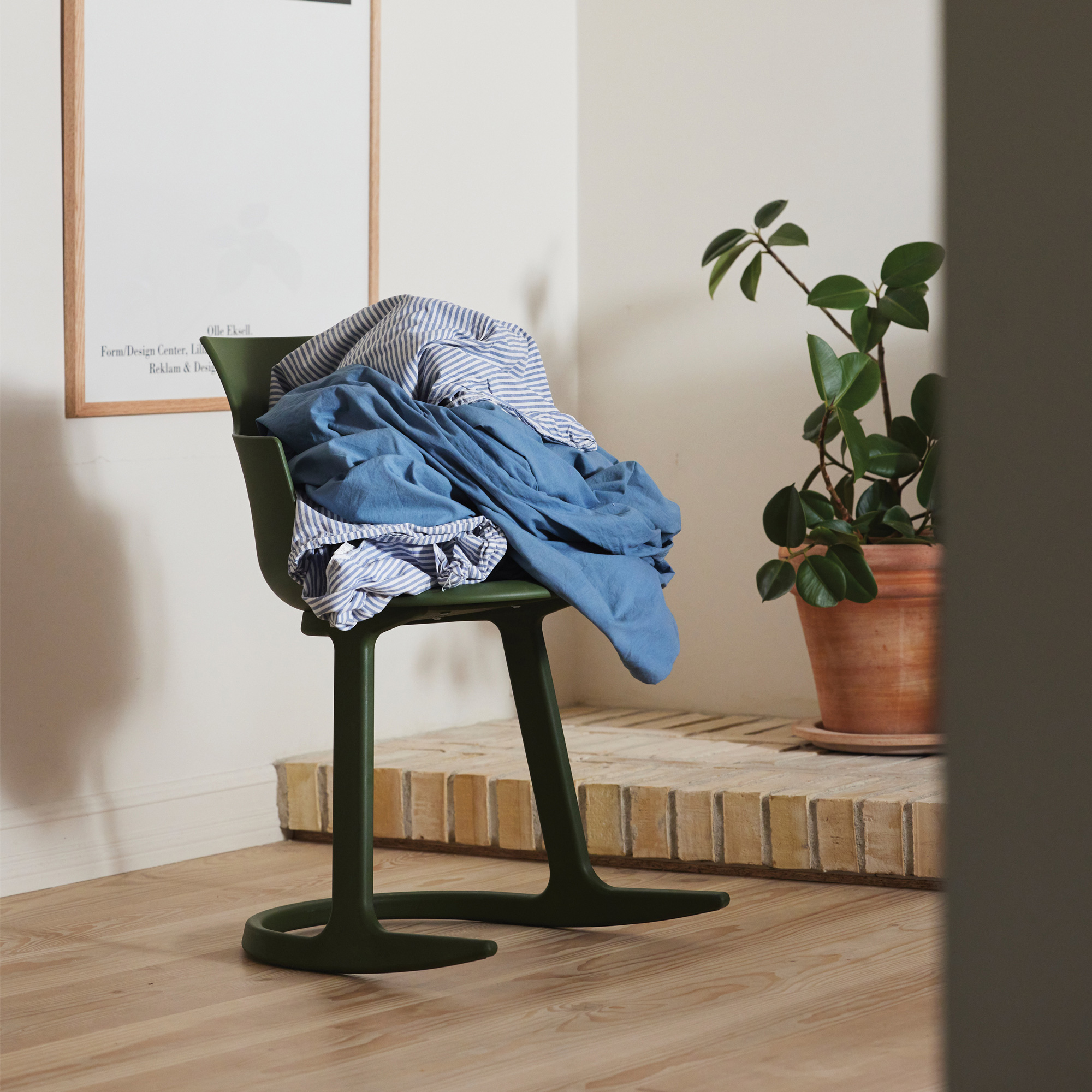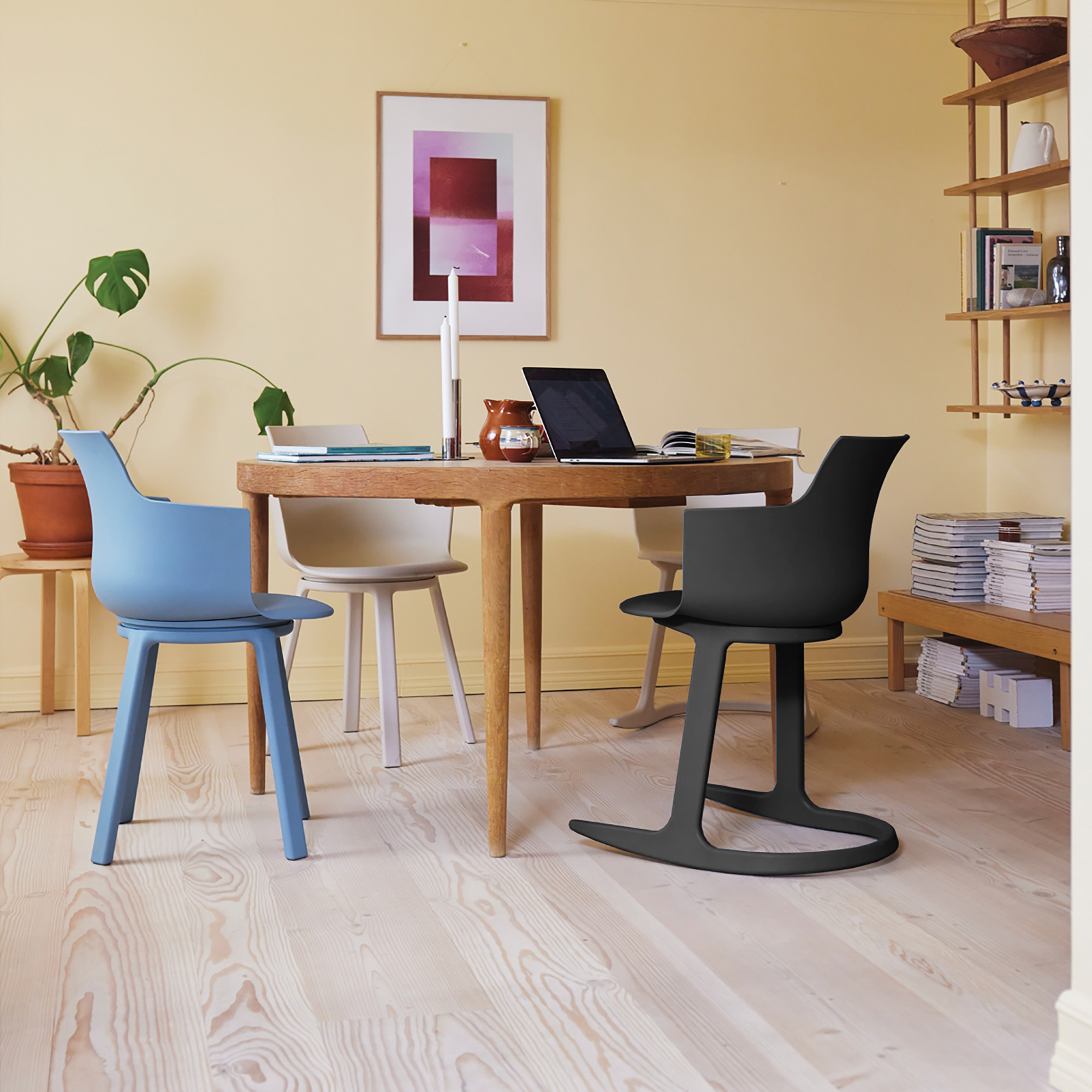Innovation, flexibility and social interaction make for a powerful blend in furniture design. Grab a seat and delve into the story of the Social® chair – a creation that redefines the boundaries of design and functionality, as told by Marius Myking of Snøhetta
The design world, constantly evolving and ever-innovative, finds a unique expression in Snøhetta’s Social® chair. In this edition of “Behind the Design,” we delve into a conversation with Marius Myking, whose leadership at Snøhetta’s Product Design division has given birth to this remarkable piece. The Social® chair, featuring two distinct variations, Social® Turn and Social® Tilt, serves as an exemplar of Snøhetta’s thoughtful design philosophy, reflecting a deep integration of aesthetic insight with functional innovation. The two chairs were developed in collaboration with Norwegian company Varier, an ergonomic-focused furniture brand.
In creating the Social® chair, Myking’s vision was clear: to transcend the conventional boundaries of furniture design and create a piece that resonates with the modern lifestyle. More specifically, the chair offers a flexible seating solution for dining tables where users often switch between family meals, social interactions, work, and play. The chair’s design is a testament to Myking’s understanding of the dynamic relationship between users, furniture and multi-functional spaces.
Sustainability is not an afterthought but a fundamental pillar in the design of the Social® chair. Every aspect, from material selection to manufacturing processes, reflects Snøhetta’s commitment to reducing environmental impact. The chair showcases how sustainable design can contribute to a greener future, merging aesthetic appeal with environmental responsibility.
In our conversation with Marius Myking, we uncover the layers of creativity and responsibility that define Snøhetta’s product design philosophy. The Social® chair is not merely a culmination of this philosophy; it is a forward-thinking response to the contemporary design challenges, highlighting the role of design in shaping our interaction with the world around us. Join us in this insightful journey that reveals how the Social® chair is shaping new narratives in the domain of design.
Marius, could you share a bit about your journey to becoming the Director of Product Design at Snøhetta? What were some pivotal experiences or influences that shaped your design career?
My background and my journey to where I am today is a mix of many things, which I guess is the case for most people. It is filled with experiences that has shaped me in unique and maybe unforeseen ways. However it kind of makes sense and feels natural when you’re looking back. As a young competitive tennis player, I learned the value of hard work and dedication over time and believing in your own convictions brings results. As a carpenter I learned how to build things and that I had more love for creating things myself than to build what others had designed. As a Design student I had the luck of having my first exhibited prototype being picked up by a Swedish furniture company which in turn quickly taught me how little I actually knew about the business and industry of design.
Since then, I’ve strived to educate and challenge myself and those around me to explore the world of design …. Building a studio in New York, and collaborating with international household brands and companies, such as Snøhetta, before starting Snøhetta Product Design together with Kjetil T. Thorsen.
Given your extensive experience in the field, how do you see the role and responsibilities of a product designer evolving in today’s context, especially in a multidisciplinary firm like Snøhetta?
The responsibility of any designer is to continue to explore the boundaries of their ability and experiences to impact the world around them and the discipline as a whole. By sharing our experiences, both successes and failures, we can raise the impact of design collectively – which could be one of the most important things we as designers can do to face the increasing number of challenges that everyone are facing.
You’ve been involved in a diverse range of projects at Snøhetta. How do you approach the challenge of maintaining a cohesive design language across such varied works while also ensuring each project has its unique identity?
The simple answer is that we don’t. We in fact pride ourselves on developing contextually relevant designs / design languages. Meaning that each project is unique through the different collaborations we initiate and the unique mix of qualities and opportunities this presents. By staying committed to always focusing on improving our process and our relations, to continue to learn, and to grow as individuals and as a team, we can ensure unique and contextually relevant results that has value to us and our collaborators.
In the design of the Social® chair, how do you balance your personal creative signature with Snøhetta’s collective design ethos? Could you elaborate on the interplay between your individual artistic vision and the collaborative framework of Snøhetta in this project?
All our projects start by defining the best balance between a social, environmental, and economical sustainability. Having this as our starting point, we then utilize the unique resources, knowledge, and experiences we have through our Snøhetta studios and network to make informed choices along the way – ensuring a meaningful impact of each project.
The Social® chair presents two variations, Turn and Tilt, each offering a unique experience. How did you approach the design process to ensure these variations harmonize within the chair’s overarching concept?
Through close collaboration with Varier, we were able to narrow down two distinct ergonomical values we saw a growing need for in the modern, urban living environment – which for many has become a hybrid between home and office. We then decided that the best approach was to separate these two into two different bases for the design to not compromise on emotional values. Through a highly iterative process and user testing in our offices, we were able to find a balance that harmonized with each other while not compromising on performance.
Sustainability is integral to Snøhetta’s ethos. How did this commitment shape the material choices and manufacturing techniques for the Social® chair?
Through our starting point, by identifying the best balance between a social, environmental, and economical sustainability we defined an ideal price range for the end product that would make it approachable for a larger audienceThis in turn defined our opportunities for effective manufacturing and from this point we explored and pushed the boundaries of recycled material use and the parameters that were within reach.
Reflecting on the sensory experience of the Social® chair, can you discuss how its design interacts with the less obvious human senses, such as sound and touch? How do these considerations play a role in the overall user experience and perception of the chair?
These considerations are crucial to any design you interact with. The sensory perception of a product will always be a reflection of the considerations that have been made to any aspects of a design – from materials to texture, technical solutions and a reduction of elements and ideas, to finally, an essential design. When done well, the result intuitively communicates its value as being more than the sum of its parts, whether you have the vocabulary to express it or not.
The Social® chair is designed for a range of activities and spaces. How do you envision its role in enhancing user experience in different settings, particularly in communal areas?
The chairs have been designed as a direct response to what we believe is an increased need for flexibility within your home and other multifunctional areas. The dining table and its needs has changed. It’s where your kids play, where you entertain guests, where you work from home and where you eat. The resulting designs and functions are adding flexibility to accommodate all these needs. Although it may not make you more social, the flexibility certainly will make it easier to socialize.
As a designer, how do you navigate the ever-changing landscape of design trends while ensuring your creations remain anchored in Snøhetta’s aesthetic and values?
We do not focus on trends. Ever. We always aim for pushing ourselves and the boundaries of technologies, innovation, materials and new and informed insights and contexts. By making sure that our design process is strategically driven by informed choices, we aim to develop lasting designs for the future – regardless of trends.
For aspiring designers looking to make their mark in a competitive field, what insights can you share about creating products that are both innovative and practically viable?
Great design is not done in a vacuum. You need a strong team, collaborators and unique resources willing to come together and push in the same direction to explore the unknown and to take chances. Also it’s important to understand that good design and good business goes hand in hand. The more ambitious our design goals are, the more sound our business approach should be.
The Social® chair features a thoughtful disassembly design for future recycling. How does this reflect your approach to sustainability throughout the design process, and what are your aspirations for the future of eco-conscious furniture design?
Environmental, social, and economic sustainability is our starting point for every project we decide to pursue. By this we aim to push the boundaries within each project’s opportunity and constraints. We want to be at the forefront of regenerative design and production – to create long lasting designs through functionality and emotional connection, while ensuring that things can be easily repaired, shipped, exchanged, and recycled which by now should be a given within the industry. Each design’s impact throughout its lifetime has never been a more important driver for design innovation.
Finally, what overarching message do you hope the Social® chair conveys to both the seasoned design enthusiast and those newly engaging with the world of design?
Varier is a unique company and brand. Their culture is built up on a mix of ergonomics, crazy creative individuals, and a willingness to challenge the established. At Snøhetta we love to take on challenges that allows us to approach things in a new way and come up with forward-looking designs to help shape the future. We hope that Social illustrates and emphasizes this. Our lives has changed for good and we need to change with it.


